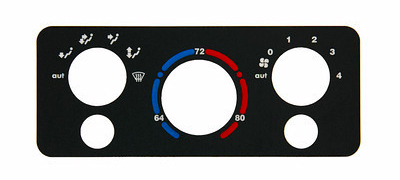Why Top-Tier Graphic Overlays Are Crucial for Commercial Equipment
Why Top-Tier Graphic Overlays Are Crucial for Commercial Equipment
Blog Article
Comprehending Exactly How Graphic Overlays Job to Enhance Your Imaginative Jobs
Graphic overlays serve as an essential element in the realm of innovative jobs, enhancing both visual interaction and audience engagement. The effective integration of these overlays calls for mindful factor to consider of style concepts and purposes.
What Are Graphic Overlays?
Graphic overlays are visual components that are put on top of a base picture or interface to boost interaction and customer experience. They offer various purposes, consisting of providing extra details, leading customer communication, and boosting aesthetic charm. Typical applications of graphic overlays can be found in digital user interfaces, marketing, and academic products.

Graphic overlays are frequently produced utilizing layout software, enabling designers to adjust dimension, openness, and color to achieve the preferred impact. Recognizing exactly how to successfully execute graphic overlays is vital for developers intending to boost their creative projects.

Advantages of Utilizing Graphic Overlays
Making use of graphic overlays can significantly boost the efficiency of aesthetic communication across different mediums. One of the main advantages is the capability to communicate complex info succinctly. By layering graphics, message, and pictures, overlays facilitate the presentation of information in an extra absorbable layout, making it easier for target markets to comprehend essential principles promptly.
Additionally, graphic overlays can enhance visual allure, attracting attention to details aspects within a style. This is particularly advantageous in marketing and advertising, where catching the visitor's passion is paramount. The strategic use of colors, forms, and typography in overlays can produce a interesting and natural visual narrative, enhancing brand acknowledgment.
Furthermore, graphic overlays give flexibility in style. They permit developers to adjust material for various platforms without beginning from scratch, making certain uniformity throughout numerous channels. This adaptability is important in today's digital landscape, where material should be maximized for varied devices and layouts.
Types of Graphic Overlays
When taking into consideration the numerous types of graphic overlays, it is vital to acknowledge their diverse applications throughout different industries. Graphic overlays can be classified mainly into three types: practical, decorative, and informational.
Useful overlays are created to improve the usability of a product. Typically located in electronic devices, these overlays commonly give responsive feedback through raised buttons or textured surfaces, enhancing individual communication. They can additionally act as a safety layer, guarding the underlying components from wear and tear.
Decorative overlays concentrate on visual improvement, permitting brand names to reveal their identity with vivid styles and custom graphics. These overlays are widespread in packaging, marketing, and point-of-sale products, where aesthetic allure is vital for bring in customers.
Informative overlays, on the other hand, are utilized to share important data or instructions. They can be seen in applications such as signage, individual guidebooks, and instructional graphics, where clearness and readability are paramount.
Each sort of graphic overlay offers a special purpose, adding to the general effectiveness of innovative projects while resolving certain needs within numerous markets. Understanding these differences is vital for choosing the best overlay for your job.
Best Practices for Application
To make certain the successful application of visuals overlays, it is crucial to establish a clear understanding of the job's purposes and the particular demands of the end-users. Begin by carrying out thorough research study to identify the target audience and their choices, as this will notify style options and capability.
Next, produce a thorough strategy that outlines the overlay's objective, integration, and layout process. This plan should include interface considerations, guaranteeing that overlays boost instead of obstruct the individual experience - Graphic Overlays. Think about the visual power structure and maintain uniformity in style elements, such as shade typefaces, schemes, and icons, to advertise brand name coherence
Evaluating is important; collect comments important link from a depictive sample of customers to identify possible issues and locations for enhancement. Repeat on the layout based on customer input and efficiency data. In addition, ensure compatibility throughout numerous tools and platforms to maximize availability.
Tools for Developing Overlays
Developing reliable graphic overlays requires the right tools to translate layout principles right into practical applications. Different software application and platforms are available, each tailored to specific needs and skill degrees.
Adobe Photoshop and Illustrator are sector standards, using extensive abilities for developing and controling overlays. These devices give innovative functions such as layer administration, blending modes, and vector graphics, making it possible for developers to produce intricate and high-grade overlays.
For those seeking a much more straightforward method, Canva and Figma are outstanding choices (Graphic Overlays). Canva's intuitive user interface enables users to produce overlays swiftly making use of pre-designed design templates, while Figma assists in joint style in real-time, making it suitable for teams
Additionally, open-source choices like GIMP and Inkscape supply durable functionalities without the useful link connected costs of exclusive software. These devices enable adaptability in style and can fit various documents styles, guaranteeing compatibility across different platforms.

Conclusion
Finally, visuals overlays serve as powerful tools for improving innovative tasks by providing aesthetic clearness, aesthetic allure, and brand uniformity. Their diverse applications, ranging from useful to ornamental, highlight their adaptability in communication. Complying with finest methods and making use of ideal tools guarantees efficient execution and makes the most of the effect of overlays. By comprehending the essential principles and advantages linked with graphic overlays, makers can substantially enhance the top quality and effectiveness of their visual interactions.
Graphic overlays serve as a crucial part in the world of imaginative jobs, boosting both aesthetic interaction and target market interaction.Graphic overlays are frequently produced making use of style software, allowing designers to control transparency, dimension, and color to achieve the desired result.Moreover, visuals overlays can improve aesthetic allure, drawing focus to certain components within a style.Additionally, visuals overlays give adaptability in design.In final thought, visuals overlays Learn More serve as effective devices for enhancing imaginative tasks by offering aesthetic clearness, visual appeal, and brand name consistency.
Report this page